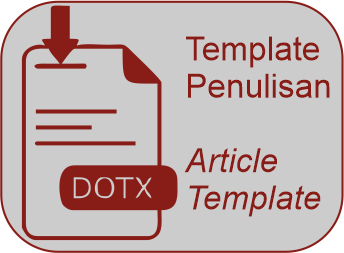The Level of Vulnerability of Natural Disasters Dante Pine Tourism Object, Anggeraja District, Enrekang Regency
DOI:
https://doi.org/10.35965/jups.v5i1.200Keywords:
Pembobotan dan overlay, Tanah Longsor, MitigasiAbstract
This study aims to analyze the model of natural disaster susceptibility to landslides in Dante Pine Tourism Object, Anggeraja District, Enrekang Regency and find out the direction of mitigation and disasters in Dante Pine Tourism Object, Anggeraja District, Enrekang Regency.
The variables used consist of 6 (six) variables including (1) Topography, (2) Soil Type, (3) Rainfall Intensity, (4) Geological Conditions (5) Land Use, (6) Tourism Activities. The analysis used weighting and overlaying of landslide hazard class maps at Dante Pine Tourism Object, Anggeraja District, Enrekang Regency, using weighted data and then using a scoring technique. The results of the map overlay produce a map of relative landslide susceptibility based on weighted data with three hazard classes, namely: low, medium, and high. Landslide direction and disaster management based on regional typology and level of vulnerability in Dante Pine Tourism Object, Anggeraja District, Enrekang Regency, land use is carried out, the use of landslide-prone areas can be done vegetatively by planting a layer of deep root crops, which can penetrate airtight.
References
Arora, A., Bhardwaj, R., & Sharma, N. (2019). Landslide susceptibility mapping using GIS and remote sensing techniques: A case study from Himalayan region. Environmental Earth Sciences, 78(4), 112–124.
Gunawan, T., & Sari, F. S. (2021). Mitigating landslide risks in ecotourism development: A case study from mountainous regions in Indonesia. Tourism Management Perspectives, 38, 100805.
Hadiyanti, R., Putra, A. S., & Rachmawati, T. (2019). Tourism development in disaster-prone areas: A risk-based planning approach. International Journal of Disaster Risk Reduction, 35, 101071.
Kasturirangan, S., & Suraj, P. (2020). Geotechnical factors in landslide occurrence: Insights from case studies in tropical regions. Natural Hazards, 102(2), 723–740.
Lestari, R., Fitriani, E., & Nugraha, D. (2021). Governance in disaster risk reduction: Implementation of disaster management law in Indonesia. Journal of Risk Research, 24(1), 23–40.
Maharani, S., Azizah, N., & Kurniawan, H. (2022). Strategic mitigation planning for natural disasters in tourism areas: A conceptual framework. Sustainability, 14(5), 2349.
Nugroho, R., Prasetyo, A., & Putra, I. (2022). Economic effects of coastal tourism development on small-scale fisheries in Indonesia. Ocean and Coastal Management, 186, 105070.
Prasetyo, B., Wibowo, D., & Ramadhan, M. (2021). Risk-sensitive tourism planning in landslide-prone regions. Journal of Sustainable Tourism, 29(6), 921–938.
Rinaldi, M., Hartono, Y., & Fauzan, R. (2020). Tectonic vulnerability and its impact on disaster potential in Indonesia: A spatial analysis. Geoscience Frontiers, 11(3), 847–860.
Singh, P., Tiwari, S., & Mehta, A. (2022). Mapping of landslide-prone zones using remote sensing and statistical models in tropical mountainous regions. Landslides, 19(4), 923–935.
Suryani, D., Maulana, I., & Anwar, S. (2022). Topographic influences on landslide vulnerability: Case studies in Sulawesi highlands. Natural Hazards and Earth System Sciences, 22(1), 145–159.
Wahyuni, D., & Sumarni, L. (2020). Sustainable tourism development in vulnerable landscapes: Integrating disaster risk reduction into tourism planning. Journal of Tourism and Cultural Change, 18(4), 432–447.
Downloads
Published
How to Cite
Issue
Section
License
Copyright (c) 2025 Eza Anugrah H, Syafri, Emil Salim Rasyidi

This work is licensed under a Creative Commons Attribution 4.0 International License.













